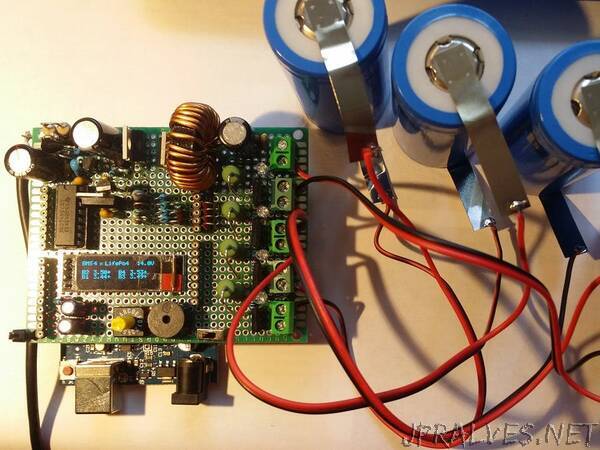
“This is a BMS charger that would be as universal as possible for testing Li-ion or LifePo4 cells.
Story
It can be strange to study a BMS in regard of the overall choice available on the market for quite a very low price.However, the objective of this project is to build a charging and testing device that can be universal, for a different among of cells to charge and for different technologies. The Arduino Uno based device, manage voltage readings, and according to results manages cells’ shunt or a buzzer. A SSD screen displays where we are. A buck DC-DC converter adjust the charging voltage for a constant charging current.
Whatever if you have the habit or if you are starting in the modern batteries world – e-bikes batteries repair, solar powered systems, etc.… - you can notice that it is not easy to manage Li-ion norLifePo4 cells:
· When you repair a battery pack, if it is easy to detect a dead cell, how do you detect a half-dead one?
· When you are building a new battery pack, BMS user manual requests that cells must be assembled once they are equilibrated. How do you perform such an assembling pack?
· With a usual BMS charger, you need a dedicated voltage value’s power supply. It is not so easy to fit with…
This device may help you J
· It can charge simultaneously from 1 to 4 cells
· Cells can be either Lithium-ion technology – for instance 18650 – orLifePo4 cells (you cannot mix)
· Monitoring of any cells voltage, plus overall voltage
· A internal protection against short circuit also limit for a constant current of about 1 A – hardware setup –
· Any power supply DC 17V to 25V@ 1.5A can fit this device. An internal buck DC-DC converter adapt the needed voltage value. A old DC 19V laptop power supply is perfect
· The balancing is performed by shunts between cells
· Under voltage alarm by buzzer
This project describes how to build such a BMS1S…4S charger / tester.”
